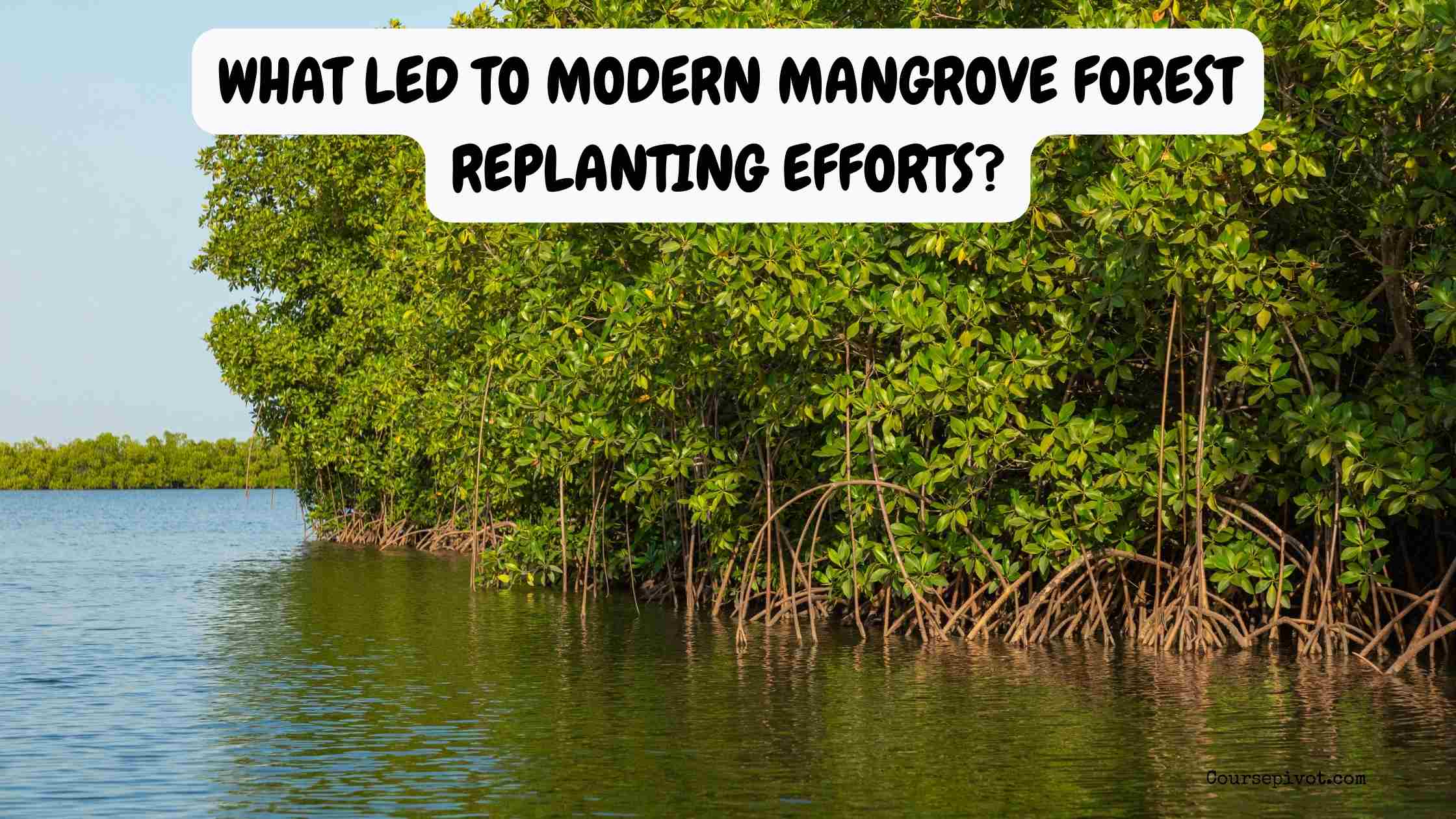
What Led to Modern Mangrove Forest Replanting Efforts
Mangrove forests are some of the most critical ecosystems on Earth. They protect coastlines, act as carbon sinks, and support rich biodiversity. Yet for decades, they were seen as expendable—cleared for shrimp farms, resorts, and urban development. So, what exactly triggered the global movement to restore mangrove forests? And why has mangrove replanting become such a widespread environmental mission?
Table of Contents
If you’ve ever wondered why mangrove forest replanting efforts have gained such momentum in recent years, the answer lies in a mix of environmental urgency, scientific insight, and community-driven action.
Let’s break it down and understand the key drivers that led to the rise of modern mangrove restoration projects.
The Value of Mangroves: Why We Need to Protect Them
Before looking at the causes of the replanting movement, it’s important to grasp why mangroves matter so much.
- They act as natural buffers, shielding coastal areas from storm surges and erosion.
- They store large amounts of carbon, helping to mitigate climate change.
- Their tangled roots provide nurseries for fish, supporting marine biodiversity and coastal livelihoods.
When these forests are lost, the consequences are immediate and severe. Flooding worsens. Fishing declines. Carbon is released into the atmosphere.
- Read our blog on How Exercise Can Positively Affect Your Environmental Health
🌱 What Led to Modern Mangrove Forest Replanting Efforts?
The rise of modern mangrove replanting efforts is the result of decades of damage, new ecological understanding, and global pressure to act.
1. Decades of Mangrove Destruction
One of the leading reasons replanting became necessary was the widespread deforestation of mangroves throughout the 20th century.
- Mangroves were cleared for shrimp aquaculture and commercial fisheries.
- Coastal tourism developments destroyed large stretches of mangrove forests.
- Logging for timber, firewood, and charcoal further depleted mangrove coverage.
- Agricultural conversion led to the draining and diking of mangrove wetlands.
In Southeast Asia alone, countries like Indonesia and Thailand lost over 30% of their mangroves in just a few decades.
2. The Cost of Inaction Became Obvious
By the 2000s, the ecological and economic losses became too severe to ignore.
- Devastating tsunamis and hurricanes showed how areas without mangroves suffered more destruction.
- Communities began to notice increased flooding, loss of fish stocks, and disappearing shorelines.
- The financial cost of repairing storm damage without mangroves far exceeded the cost of conservation.
As these disasters mounted, governments and NGOs began to ask a powerful question: What if we brought mangroves back?
3. Climate Change and the Search for Natural Solutions
The role of mangroves in carbon sequestration pushed them to the forefront of climate discussions.
- Mangroves can store up to four times more carbon per hectare than rainforests.
- Their roots trap sediments, preventing carbon-rich soils from eroding into the sea.
- As natural carbon sinks, replanting mangroves became a key part of climate adaptation and mitigation strategies.
Global initiatives such as the UN Decade on Ecosystem Restoration (2021–2030) highlighted mangrove restoration as a top priority.
- Read our blog on What It Means to Adapt the Environment for Those with Special Needs
4. Scientific Research and Technological Advances
New ecological research showed that mangrove replanting is both possible and effective when done correctly.
- Studies proved that native species, proper site selection, and community involvement drastically increase survival rates.
- Drone mapping, satellite tracking, and hydrological modeling made restoration efforts more targeted and efficient.
- Global success stories—from the Philippines to Kenya—demonstrated that well-managed projects could reverse decades of damage.
This knowledge empowered conservationists to scale up their efforts and attract funding from governments, nonprofits, and even corporations.
5. Community Engagement and Local Benefits
Mangrove restoration isn’t just an environmental issue—it’s a livelihood issue.
- Replanted mangroves improve fish populations, supporting small-scale fisheries.
- Healthy mangrove ecosystems support ecotourism and sustainable harvesting of honey, wood, and medicinal plants.
- Restoration projects often employ local people, blending conservation with economic opportunity.
As a result, many replanting efforts are now led by the very communities that once saw mangroves as disposable.
6. International Funding and Policy Support
The rise of global green financing created new streams of support for mangrove projects.
- Countries include mangrove restoration in their Nationally Determined Contributions (NDCs) under the Paris Agreement.
- Organizations like the Blue Carbon Initiative and Mangrove Alliance for Climate provide funding, data, and strategy support.
- Tech companies, banks, and international donors are investing in carbon credits tied to mangrove reforestation.
With rising awareness and policy pressure, mangrove replanting is no longer a fringe project—it’s mainstream.
Real-World Impact: What Has Mangrove Replanting Achieved?
The result of these combined efforts has been nothing short of inspiring:
- India’s Gujarat state has restored over 15,000 hectares of mangroves since the early 2000s.
- Senegal’s replanting campaigns have rebuilt ecosystems that were once wiped out for agriculture.
- In Indonesia, community-led projects have successfully stabilized coastlines and brought back biodiversity.
- Global replanting initiatives are estimated to have restored hundreds of thousands of hectares in the past decade alone.
Why Mangrove Forest Replanting Matters More Than Ever
So, what led to modern mangrove forest replanting efforts?
It was a combination of past mistakes, climate urgency, scientific insight, and grassroots leadership. We came to realize that mangroves are not wastelands to be cleared, but essential life-giving ecosystems worth protecting and restoring.
Replanting mangroves isn’t just an environmental duty—it’s an investment in our collective future.
And as global threats like climate change and rising sea levels intensify, mangrove forests may just be one of our best natural defenses. Replanting efforts are no longer optional—they’re necessary, urgent, and deeply impactful.



